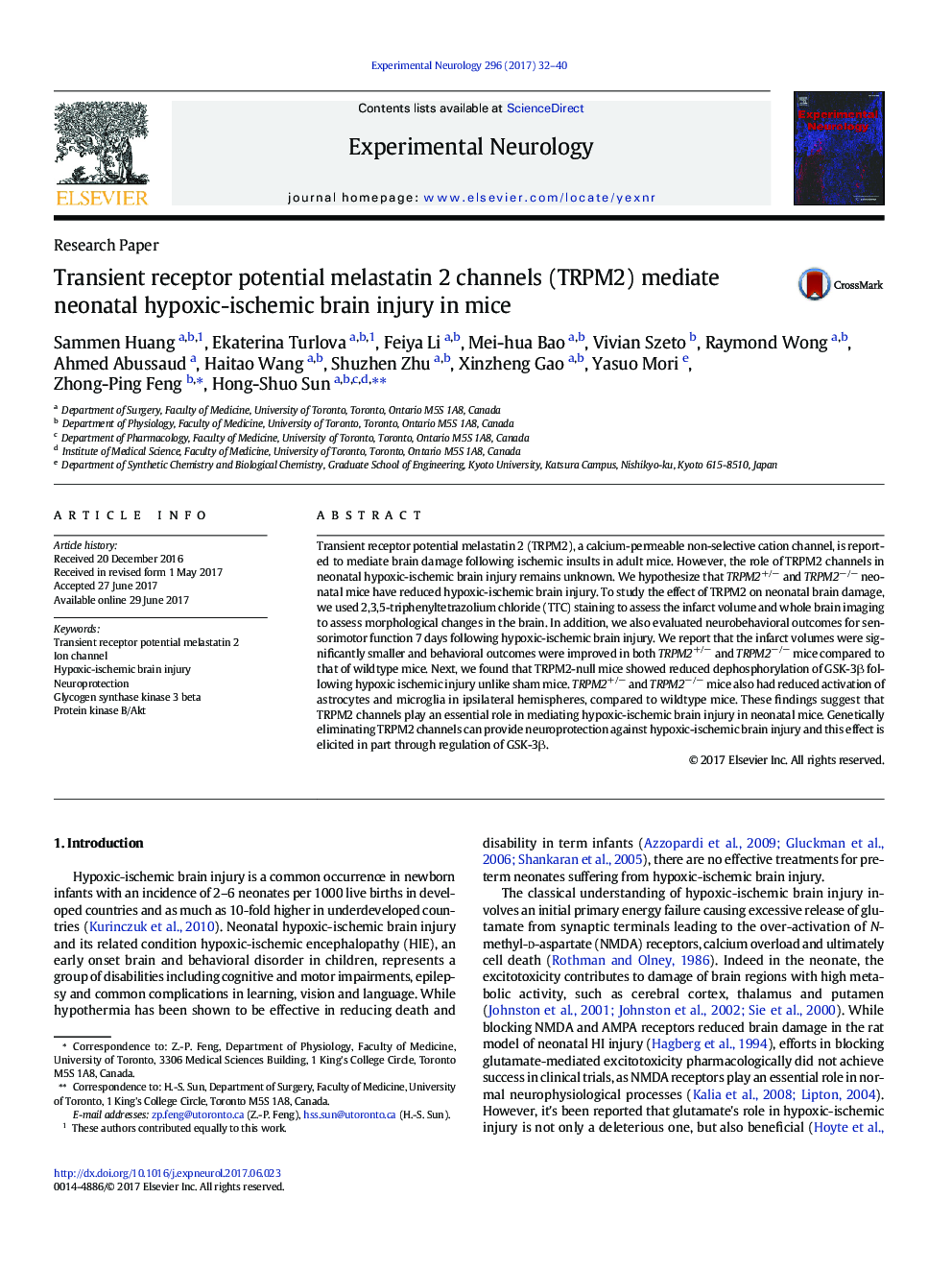| کد مقاله | کد نشریه | سال انتشار | مقاله انگلیسی | نسخه تمام متن |
|---|---|---|---|---|
| 5629133 | 1580143 | 2017 | 9 صفحه PDF | دانلود رایگان |

- TRPM2 plays a role in several neurodegenerative diseases linked to calcium homeostasis, including stroke
- We studied the role of TRPM2 in neonatal hypoxic-ischemic brain injury using postnatal day 7(P7) C57BLJ TRPM2-null mice
- TRPM2 deletion reduced HI brain damage, improved neurobehavioral outcomes and reduced immune cell activation in the HI brain
- Our results linked the activation of TRPM2 and dephosphorylation GSK-3β with hypoxic ischemic brain injury in neonatal mice
Transient receptor potential melastatin 2 (TRPM2), a calcium-permeable non-selective cation channel, is reported to mediate brain damage following ischemic insults in adult mice. However, the role of TRPM2 channels in neonatal hypoxic-ischemic brain injury remains unknown. We hypothesize that TRPM2+/â and TRPM2â/â neonatal mice have reduced hypoxic-ischemic brain injury. To study the effect of TRPM2 on neonatal brain damage, we used 2,3,5-triphenyltetrazolium chloride (TTC) staining to assess the infarct volume and whole brain imaging to assess morphological changes in the brain. In addition, we also evaluated neurobehavioral outcomes for sensorimotor function 7 days following hypoxic-ischemic brain injury. We report that the infarct volumes were significantly smaller and behavioral outcomes were improved in both TRPM2+/â and TRPM2â/â mice compared to that of wildtype mice. Next, we found that TRPM2-null mice showed reduced dephosphorylation of GSK-3β following hypoxic ischemic injury unlike sham mice. TRPM2+/â and TRPM2â/â mice also had reduced activation of astrocytes and microglia in ipsilateral hemispheres, compared to wildtype mice. These findings suggest that TRPM2 channels play an essential role in mediating hypoxic-ischemic brain injury in neonatal mice. Genetically eliminating TRPM2 channels can provide neuroprotection against hypoxic-ischemic brain injury and this effect is elicited in part through regulation of GSK-3β.
Journal: Experimental Neurology - Volume 296, October 2017, Pages 32-40